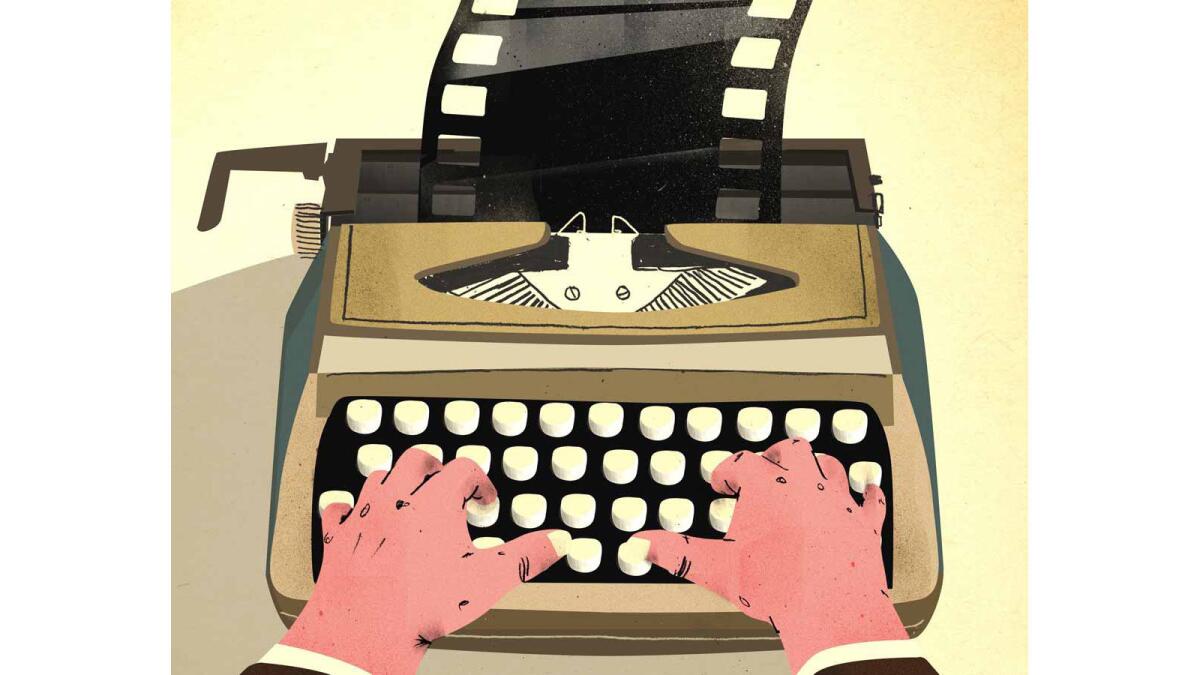When does a bookâs author help or hurt the screenwriterâs vision?

Books are perennial favorites for award-season source material, but book authors ⌠well, even when the relationship is cordial they can sometimes get in the way of a screenwriterâs vision. So who gets the final say in what goes on the screen? As these screenwriters can attest, a lot of that answer depends on whether the author is living or dead. Hereâs how they navigated that tricky territory â in both instances.
In adapting the Pulitzer Prize-winning novel by Philip Roth, âAmerican Pastoral,â screenwriter John Romano says he and the author had an ideal relationship: none.
âMy contact with Philip Roth was just what I wanted it to be,â Romano says of the notoriously private author. âI did not invite him into the process. I didnât really want in my mind to have Americaâs best writer hanging over my desk and being concerned that Philip Roth was unhappy with anything I was cutting.â

Jennifer Connelly, Dakota Fanning and Ewan McGregor star in âAmerican Pastoral.â
Roth reportedly eventually approved of the movie. But Romanoâs experience echoes the kind of relationship most screenwriters seem to want to have with source-material originators. And when those pesky authors are not around (because of being dead) or simply absent (because of disinterest or privacy issues), screenwriters tend to feel far freer with adaptations.
Once loosed from the specter of a looming author opinion (or worse, an author commenting negatively on the adaptation once itâs been filmed), screenwriters find a certain elasticity in the material. Tom Ford has directed only two movies, but heâs adapted books each time: âA Single Manâ was based on the late Christopher Isherwoodâs book of the same name, and his new âNocturnal Animalsâ is based on the late Austin Wrightâs âTony and Susan.ââ
â had to learn that the book is the book, you read the book and find out what speaks to you and put it aside and write the movie with the same core message,â says Ford, who admits it is easier as a director not to have the author in the equation.
Had Isherwood or Wright been around, though, he says heâd still have kept them at a distance. âYou give an author meaningful consultation rights,â he says. âHad either of them been alive I would have talked with them. But you want your movie to be a singular expression of what youâre trying to say, and the ultimate singular expression is one where no one else has any control over what you want to say.â
For many filmmakers, finding a way to dovetail that singular expression with the bookâs intent can be a challenge. Whit Stillman took an early epistolary novella by Jane Austen, âLady Susan,â and turned it into âLove & Friendshipâ â but while he did expand at least one characterâs role (that of Sir James Martin), he also wanted to make sure the dialogue rang true for the period and for Austen.

âLove & Friendshipâ
âWe focused on the language,â he says. âI obsessively read her work, and I found experts and all sorts of tools to get the words and phrases right. But sometimes they would say, âThis phrase is impossible in the 18th century, and Iâd find it in Jane Austenâs text.â
Thatâs apparently less true with films based on real events; âSullyâ screenwriter Todd Komarnicki was unable to speak with the late Jeffrey Zaslow, who co-wrote âHighest Dutyâ with Chesley âSullyâ Sullenberger, but he did seek out the man himself.
âHe was a great partner, because he understood there was a great difference between a book and a movie, and he trusted us to surrender that,â says Komarnicki. âHe was great with the aviation elements, and he might say, âI would never say that particular word.â It was a beautiful thing.â
And then there are folks like screenwriter Patrick Ness, who â all due respect to Romano â may actually have had the dream setup for adapting âA Monster Calls.â For one thing, itâs his book â he wrote it based on notes and a partial chapter after original author Siobhan Dowd died. But then he got to do something almost unheard of.
âI decided to write the script first to say, âThis is what I value in the material and what can be changed and I need to find a filmmaker who wants to make that,ââ he says.
Yet even Ness had to come to terms with shutting up his internal author so that the screenplay could have its own voice. âI genuinely believe that the book remains, and the book is mine,â he says. âYou can cherish the book and the film for different reasons. If you force things, it will make a bad movie.â
The fact is, in the war between author and screenwriter, the screenwriter virtually always wins. As Stillman notes, âLiving authors are a problem. Itâs much better to have an author safely departed because they do cause trouble. What you have to remember is that you owe everything to the movie, and nothing to the original.â
See the most read stories this hour Âť
ALSO:
VIDEO: âNocturnal Animalsâ stars talk up director Tom Fordâs eye for detail
â20th Century Womenâ is writer-director Mike Millsâ ode to the women in his life
Taylor Sheridan delves into personal and social themes with âHell or High Waterâ
More to Read
From the Oscars to the Emmys.
Get the Envelope newsletter for exclusive awards season coverage, behind-the-scenes stories from the Envelope podcast and columnist Glenn Whippâs must-read analysis.
You may occasionally receive promotional content from the Los Angeles Times.










